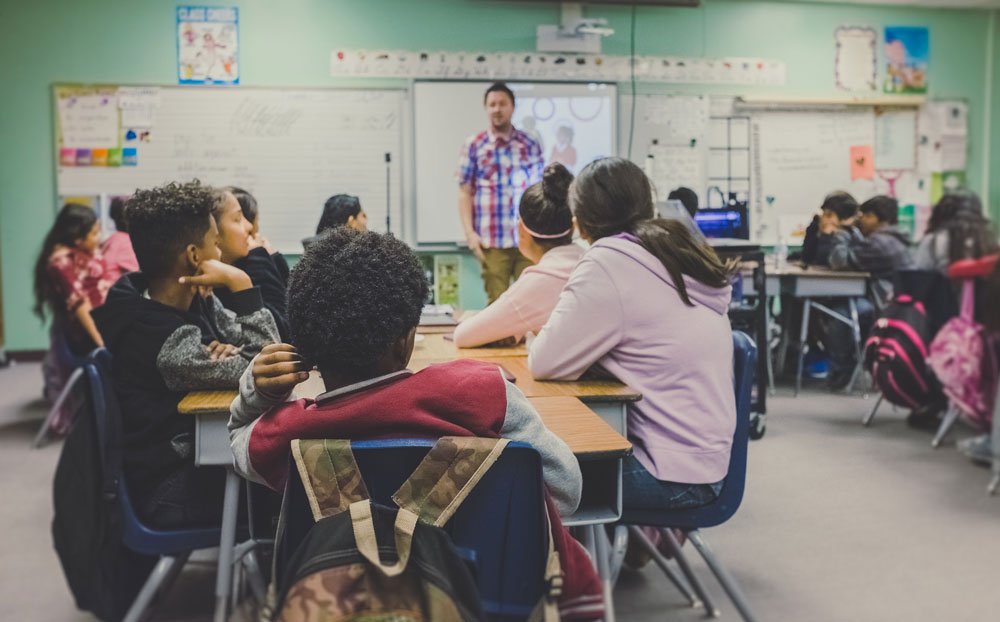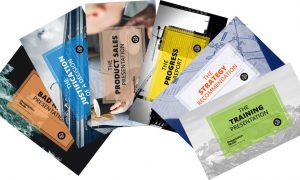5 Reasons Teachers Need Stellar Communication Skills


The thing about public speaking skills is that once you have them, they can be applied just about anywhere. No matter who you are or what career you have.
At its heart, communication is the art of sharing ideas, and public speaking is the art of communicating with many people at once. This is a skill everyone needs in their occupation, but perhaps one of the most important jobs that absolutely relies on communication is teaching.
Is the Classroom Just a Stage?
Sure, teaching classes isn’t just about entertaining a room of students, but it is about learning. And it’s absolutely about sharing ideas in ways students will remember.
Here’s the thing: any subject, no matter how technical or unusual, can be taught in a way that’s engaging and fascinating. The key is a passionate teacher with great presentation skills.
Of course teachers realize when they choose their profession that they’ll be up in front of a classroom daily. But many may not realize that all the best practices of public speaking apply directly to teaching.
Here are five of the biggest reasons teachers need great presentation skills in the classroom:
1) Making connections
The structure of a class is extremely similar to the structure of a well-thought-out speech. Teachers do want students to engage and share their thoughts, but if the lesson rambles and is difficult to follow, they’re going to check out the second the teacher starts talking.
To help students stay attuned and make powerful connections of understanding, it helps if teachers plan the overarching structure of their ideas and build in strong transitions from thought to thought.
Make sure you tell them what you’re going to teach, teach it, and then review what you taught.
Students will make those connections if the instructor provides an organized framework to see the big picture.
More to Read
10 Tips for Building a Strong Story
Even the Shortest Story Needs Structure
Bottom-Up Outlining: Your Brain’s Natural Method for Organizing Data
9 Reasons Why Delivery Is King Over Content
2) Engaging an Audience
A teacher’s audience just happens to be their students. The nice thing about a classroom setting is that teachers can get to know their students very well. This gives them an edge on connecting with their classroom and knowing how to engage students with the material.
As I covered in my previous article, nothing captures an audience’s attention like interaction, stories, and personal engagement.
Students don’t have to be passive listeners during a lesson.
Instead teachers can teach in a way that’s genuinely relatable and filled with opportunities for students to be part of the learning process.
A big part of this is knowing about the age group they teach. Methods that engage high school students are extremely different from what will capture the attention of a room of fourth graders. Find out what a class is interested in outside of the classroom and it will be that much easier to teach them. Personalize the lesson to your class!
More to Read
7 Surprisingly Simple Ways to Keep Your Audience Hooked
The Best Way to Explain Complex Concepts – Part 1
The Best Way to Explain Complex Concepts – Part 2
3) Presenting with Creativity and Style
Most teachers are on the lookout for creative object lessons for a reason. Interesting classes are just easier to remember, which makes the subject matter more memorable too.
All the same strategies that make public speeches interesting work just as well in a classroom setting. Fun visuals, demos, asking for volunteers, showing an example in action, multimedia experiences, personal stories, and many other creative experiences all make a lesson ten times better. Something as small as a video clip or an elegant PowerPoint presentation can be just the thing to deliver a concept well.
Teachers are limited only by their own creativity, so think of innovative ways to help students learn and understand.
Because classrooms are an intimate setting, they’re often an easier place than a stage for true creativity to unfold.
Don’t be scared to embrace technology and push the boundaries of what you bring to class. Use all five senses as you brainstorm ideas.
More to Read
How to ‘Prop Up’ Your Next Presentation
Why Teaching PowerPoint Benefits Everyone
4 Surprising Ways Video Is Changing Education
The Best Ways Online to Create an Animated Presentation
Will the Power of PowerPoint Lie in its New 3D tool
4) Handling Q&A Well
One of the most nerve-wracking aspects of public speaking is taking questions on the fly. But teachers have to do this too. Yale University has released some pretty useful insights on public speaking for teachers, and they cover this very topic. Here are four tips Yale recommends for teachers who are nervous about Q&A:
- See tough questions as opportunities. It’s human nature to get nervous when the really hard questions come up, but don’t assume that students are testing you. Instead see tough questions for what they are: proof that students are engaging with the material. That’s reason for excitement!
- Prepare before you tackle a Q&A. Before walking into a teaching situation, it’s important to mentally run through the types of questions people will ask. This includes common questions, concepts that typically cause confusion, and structured responses you can give.
- Have a strategy of answering questions. Once you’ve thought out some good answers to give, think about the way you’ll be presenting them. The way you answer a question can matter just as much as the content. Yale has even built a handout on how to answer questions and the best way to admit you don’t know something.
- Don’t forget about body language. What you do with your hands while you talk can make or break a public address. Especially when answering questions, it’s important to avoid defensive postures like folding your arms, clasping your hands in front, or shoving hands in your pockets. Film yourself talking if you need a better view of what you’re doing.
More to Read
The Most Successful Ways to Answer Questions From Your Audience
5) Spreading Influence
I’m pretty sure every teacher out there secretly wants to make a difference in their students’ lives. The goals of public speaking are no different.
A person’s ability to spread great ideas increases exponentially when they speak to bigger audiences and teach more and more students. Larger classrooms can be intimidating, especially for a new teacher just starting out, but once that fear is conquered, they’ll present better and better as teaching becomes second nature. Being a great presenter only increases the likelihood that a teacher’s passion and greatness will show through.
More to Read
Even With Great Content You Can Destroy Your Message
7 Famous Speeches that Changed the World
Be inspired by these great speeches picked out by the Gurus: The Guru’s Big Five Questions
Why Public Speaking Should be Taught in Schools













